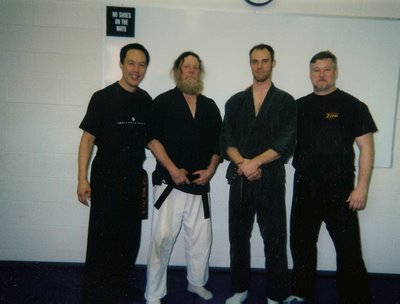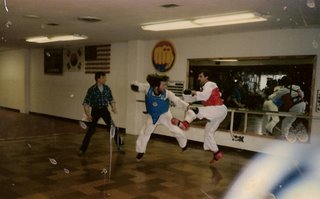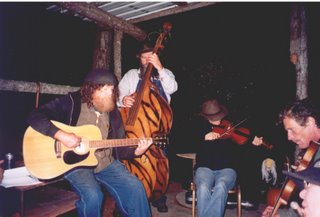
The Dojo Rat Blog had a reader request from "d", that I thought was worth sharing:
D said...
My comment is on your "Pack of Dojo Rats" picture on the top left of your blog. Do you realize who that picture is of and the background? If you do, are you claiming a connection (guessing your age I think you are a bit too young to have been involved)? If not, I suggest you should take it down or give proper recognition out of respect.
December 27, 2006 9:34:00 AM PST
Here's my response. Buried in my very first post on this site is my view about what a Dojo Rat is, and my reason for using the picture of John Keehan (Count Dante) in the "Flagship" position on my blog. I won't re-hash that post in it's entirety, but here's the gist; everyone knows someone they have trained with, or have at times themselves, been a "Dojo Rat". The Dojo Rat is always at the Dojo, or travels to several Dojos. He or she has worked through pain, caused pain to others, and mended broken equipment and body parts. They go to the Dojo even when they feel crappy, and always feel better later. But what seperates Dojo Rats from common atheletes is a sort-of "Contemporary Bushido" not found in todays sandlot or professional sports. There is responsability to Dojo, family, friend and employer. There is an effort to believe and seek the right path, something not found in professional sports today.
The photo of John Keehan, later known as Count Dante, represents to me the classic Karate-kitsch of an era when the martial arts were just evolving in the United States. Dante's ads, which I read in the comic books of my youth, predated the more popular media shows such as "Kung Fu", and "The Green Hornet". They reeked of danger and mystique and magick. They inspired a generation of kids to investigate this thing called martial arts, with it's promise of self confidence and fearlessness.
As I dug into Dante's history I found this excellent article by Dan Kelly in "The Chicago Reader" titled "The Life And Death Of The Most Deadly Man Alive". It can be read at http://www.chicagoreader.com/features/stories/countdante/ -- It profiles the rockous bare-knuckle 1960's Chicago "Dojo Wars", and is a great bio of Dante. In previous posts I have written about how rascism, subtle or overt, affected the development and sharing of the arts. Asian masters were reluctant to teach whites, whites were unlikely to teach blacks, etc.
In this area, Dante was colorblind, and this may be one of his best contributions to the era. His Dojo included anyone he saw fit to teach and train with.
Film maker Floyd Webb is putting together a movie documentry on the life of Dante. His website can be found at http://johnkeehan.blogspot.com/ --
Webb has compiled an enormous amount of information on Dante, inspired by his own youth experiances in Chicago, and actually met Dante at a tournament one time. Webb eludes to some more covert sides of Dante; his connection with the Chicago mob, and possibly the Castro's in Cuba and U.S. Intelligence agencies.
Dante is reported to have died from a bleeding ulcer, at a young age. But Webb suggests that he has been unable to obtain police information such as mug shots and medical information. This is the M.O. for someone that has gone into a witness protection program, or is being protected by authorities. Or maybe just more fodder for legends and conspiracies.
Please Check out Floyd Webbs blog, and the article by Dan Kelly, they are both fascinating.
So, returning to the above request by "d", I hope this all makes more sense.
-- And If that "d" stands for "Dante", well....






















